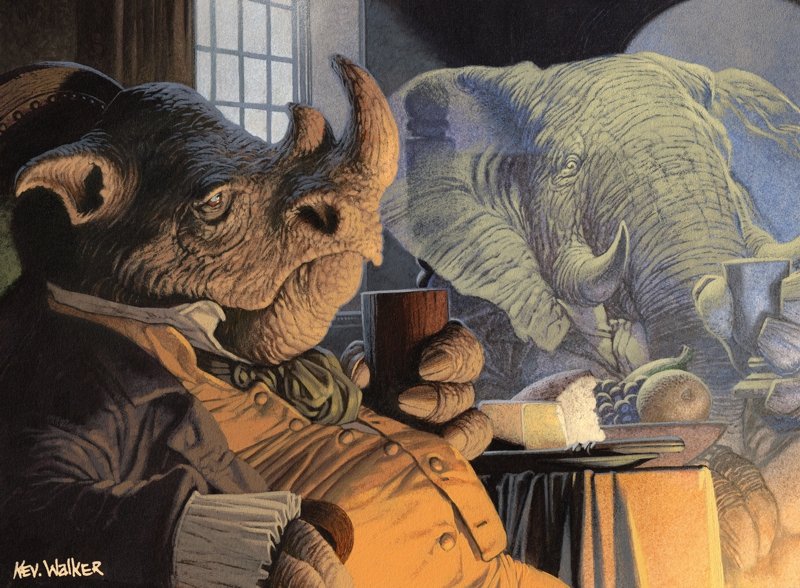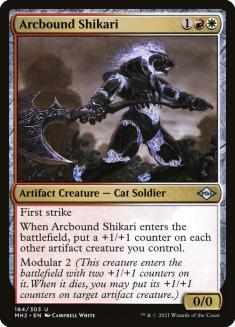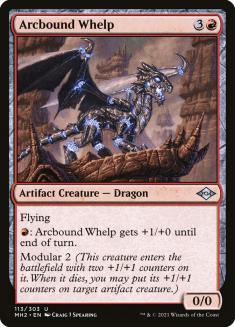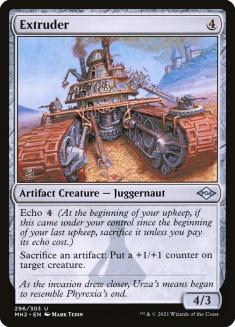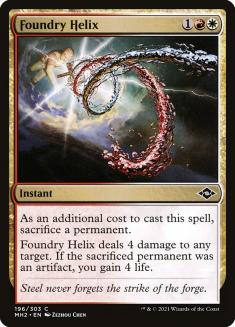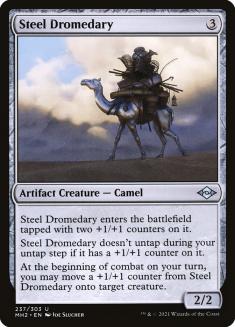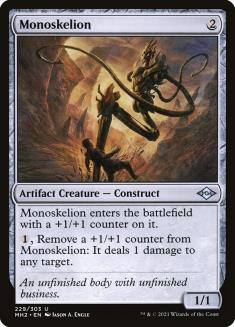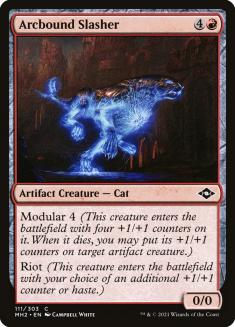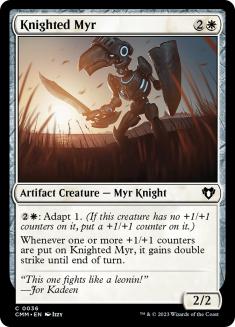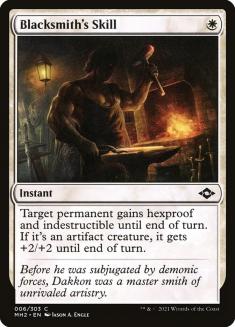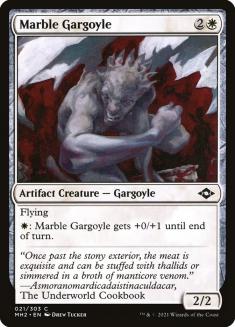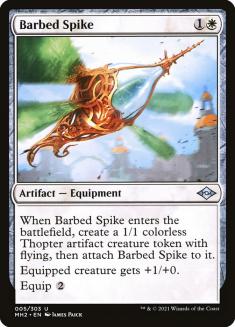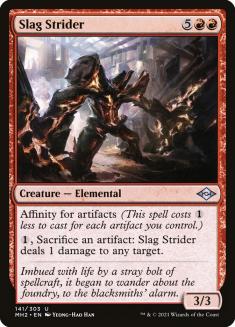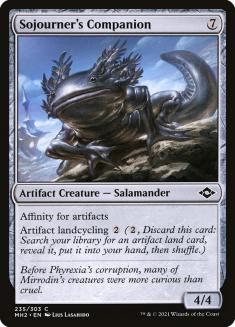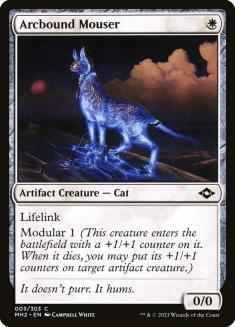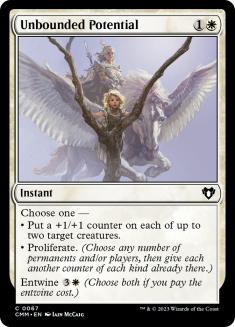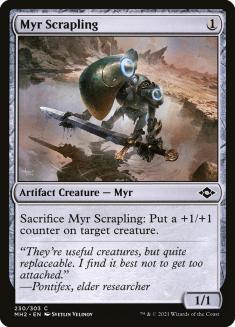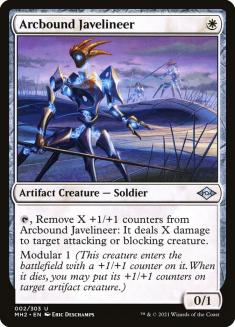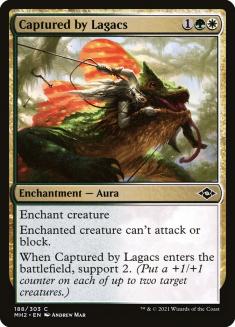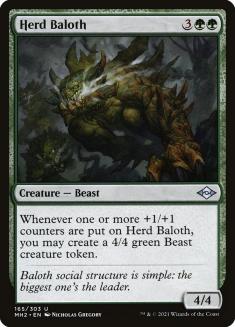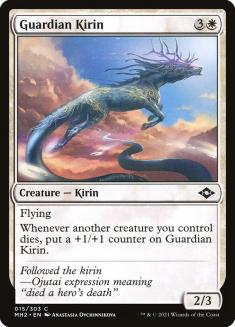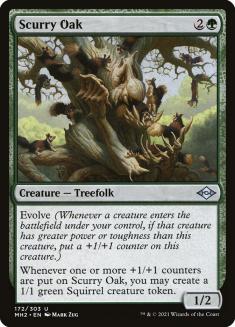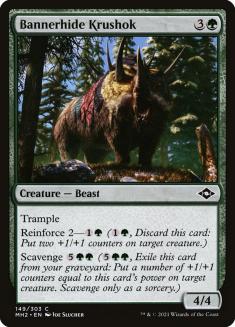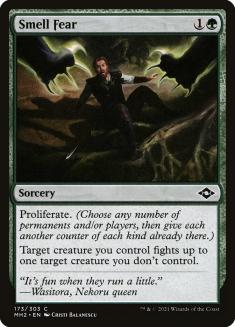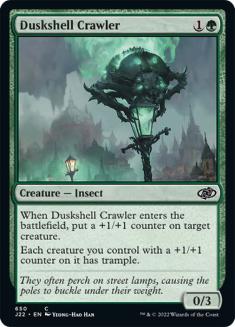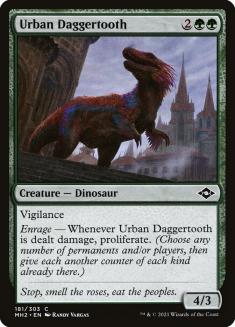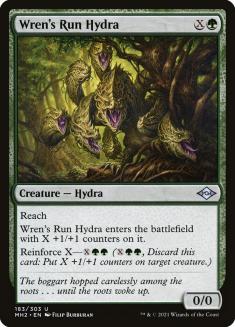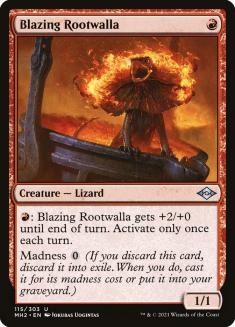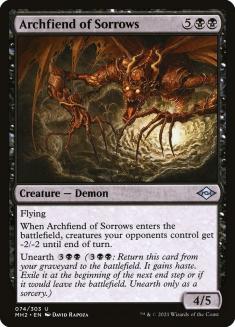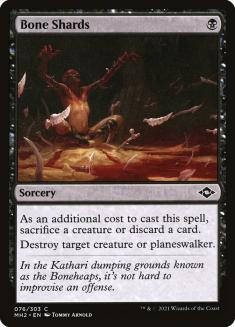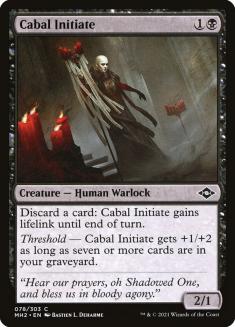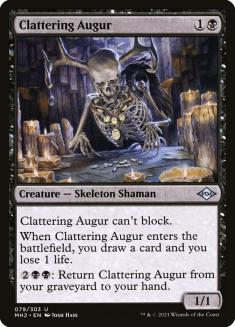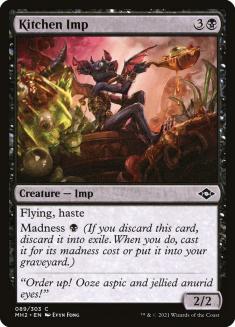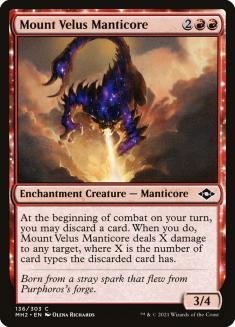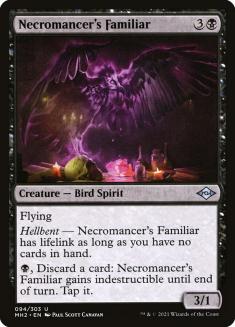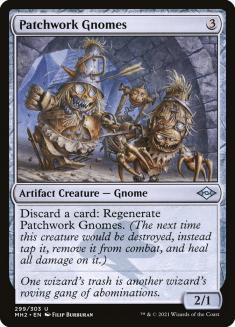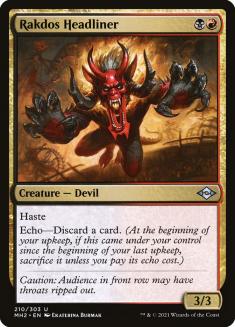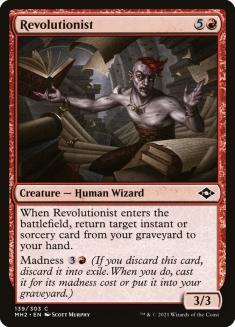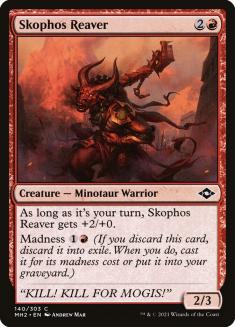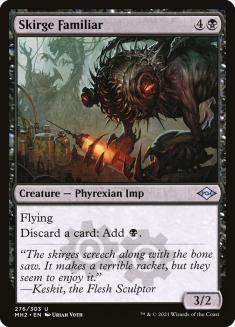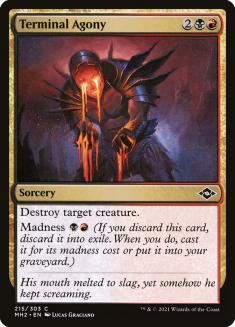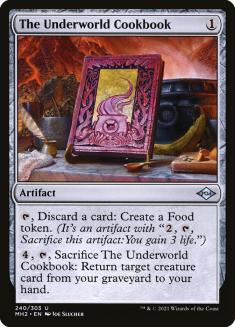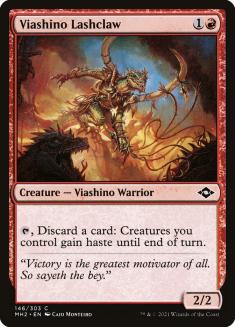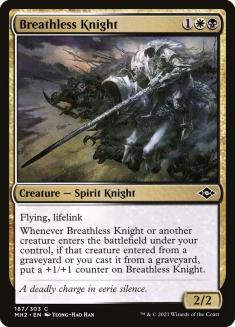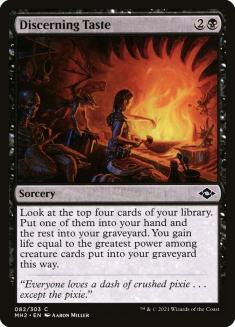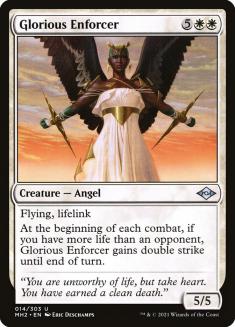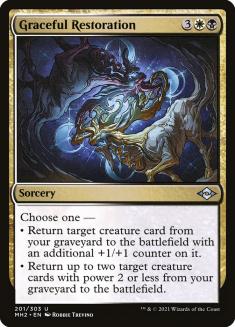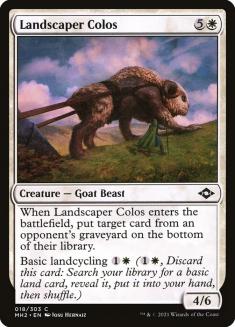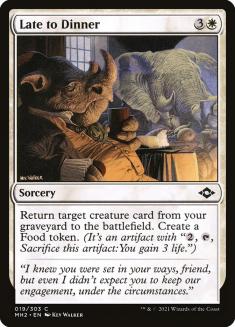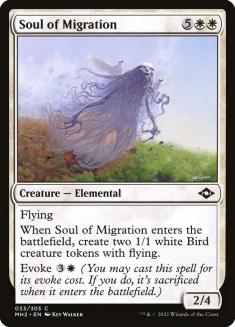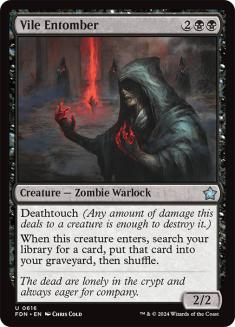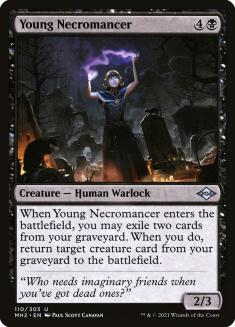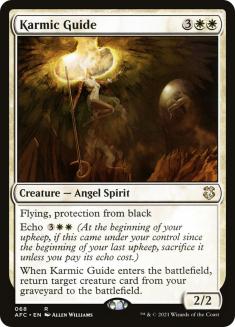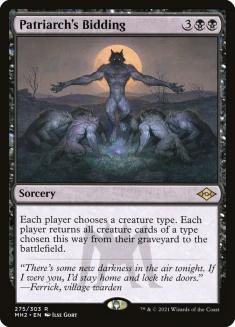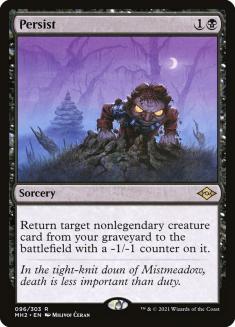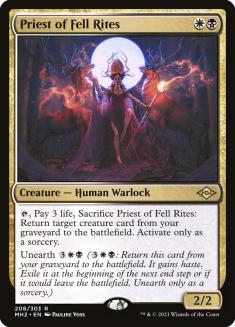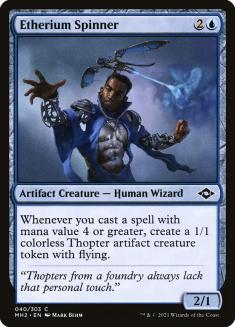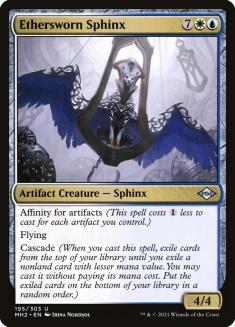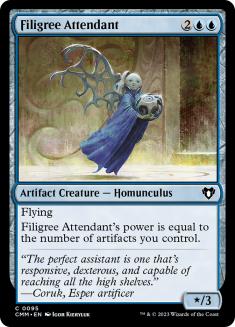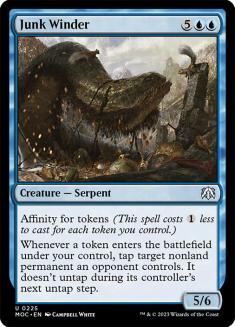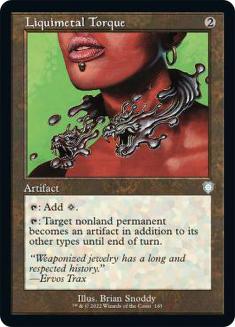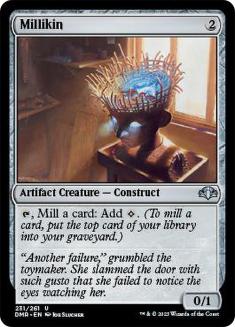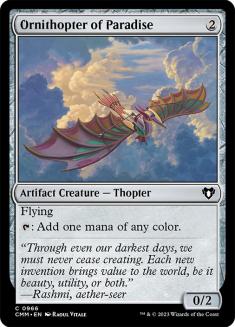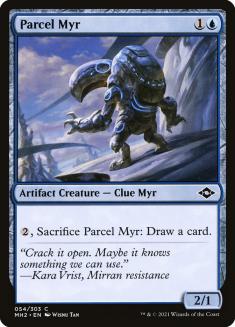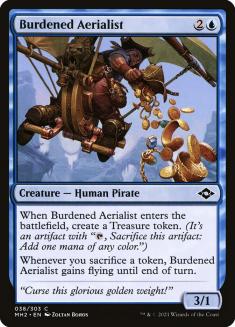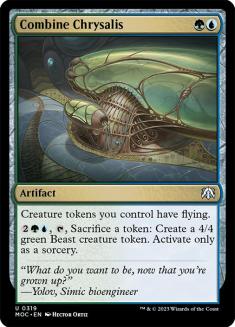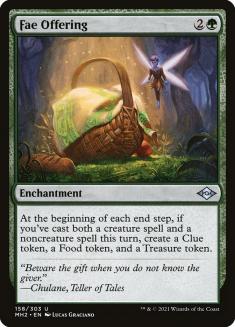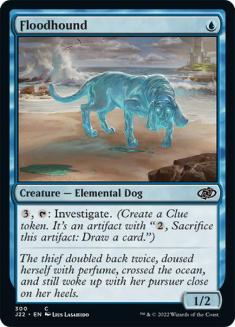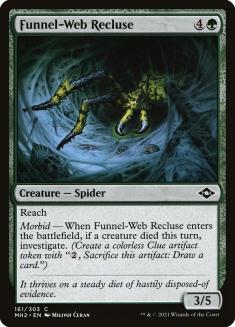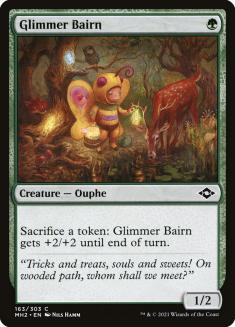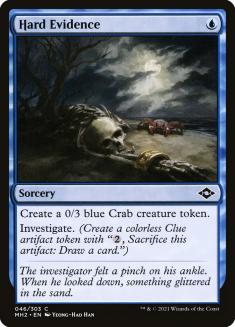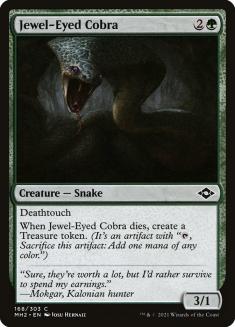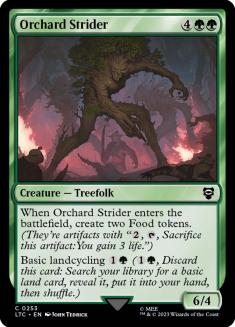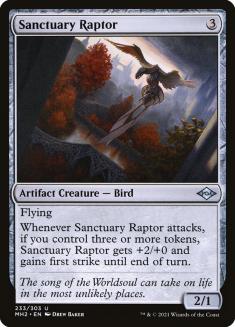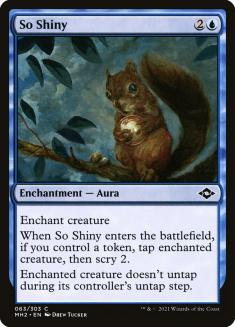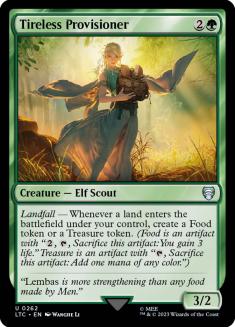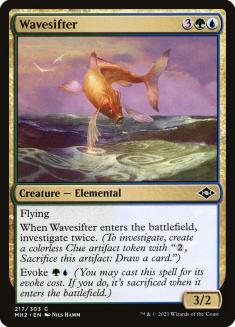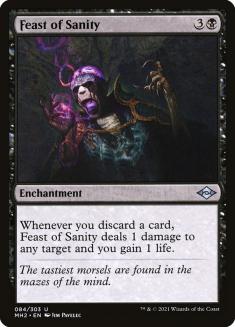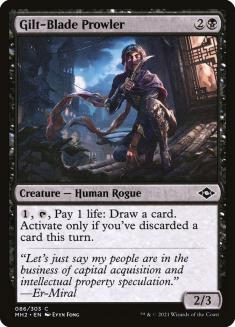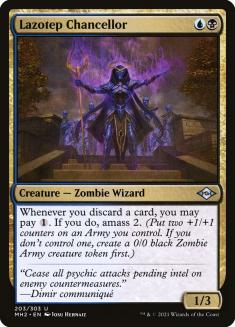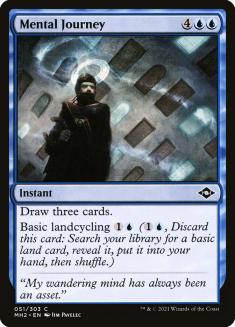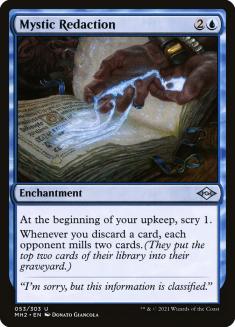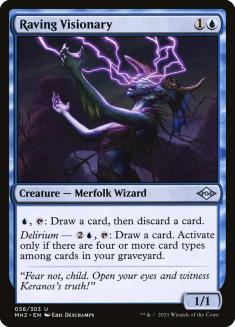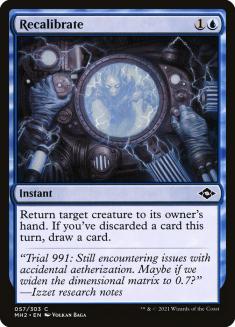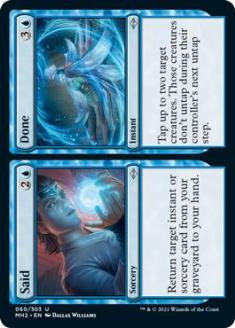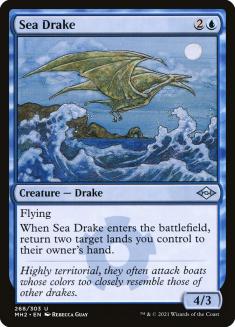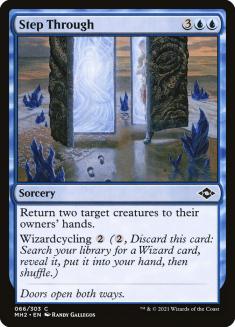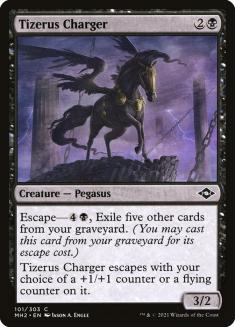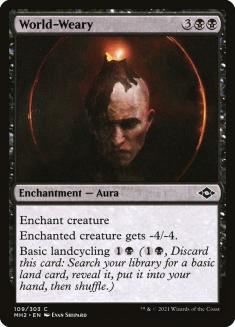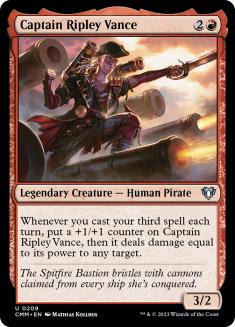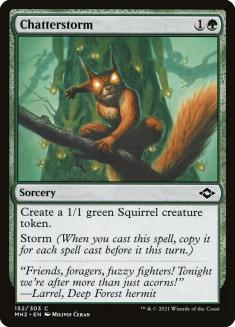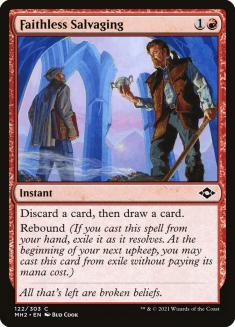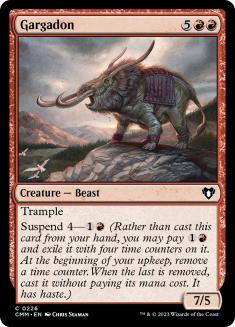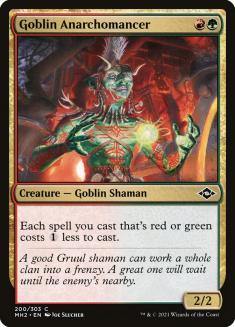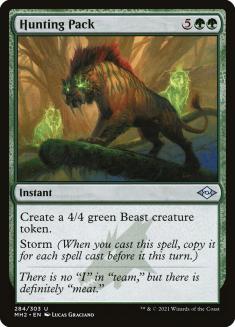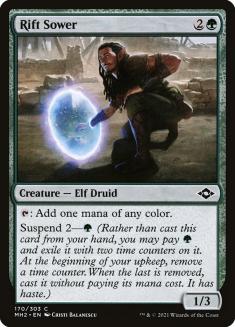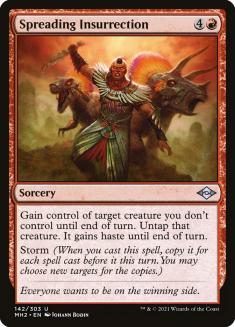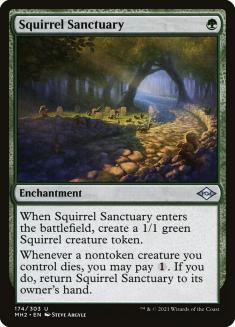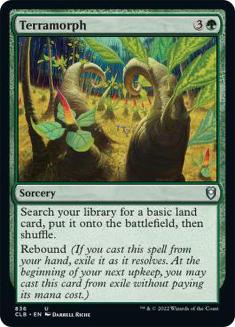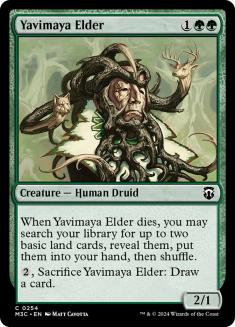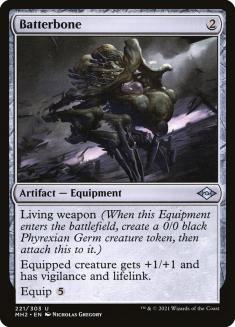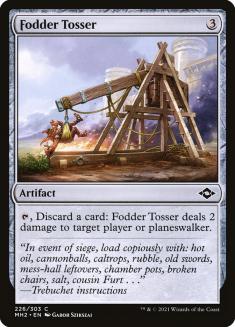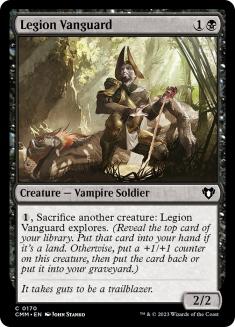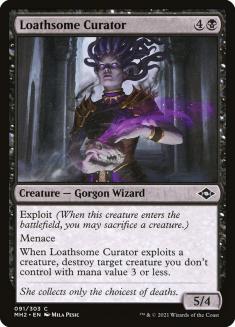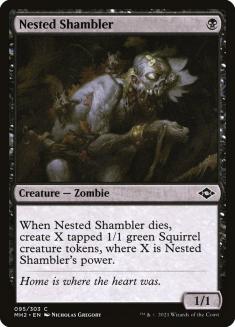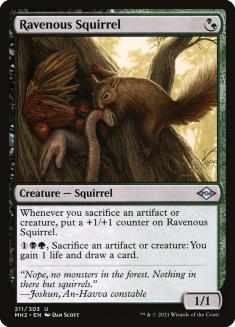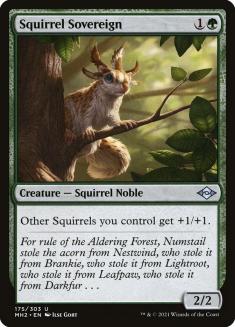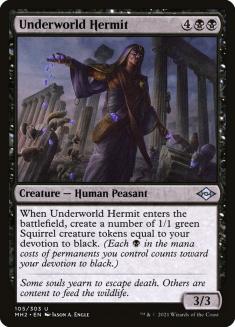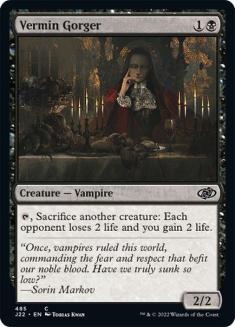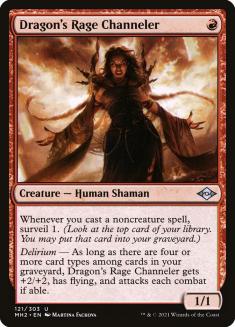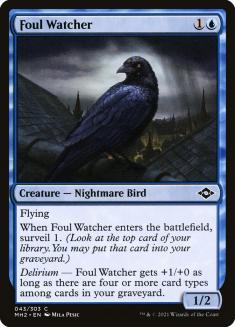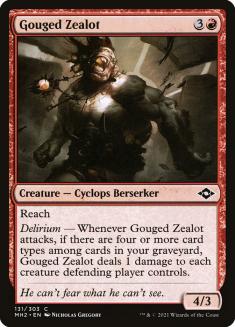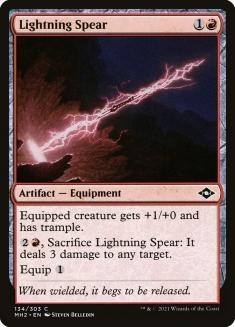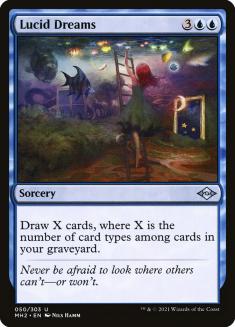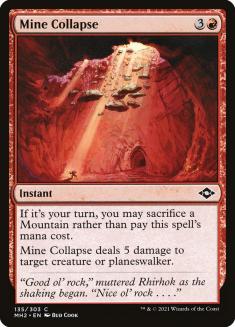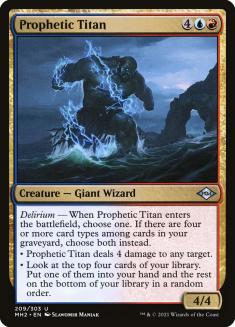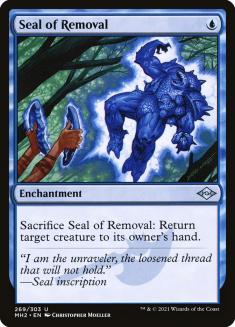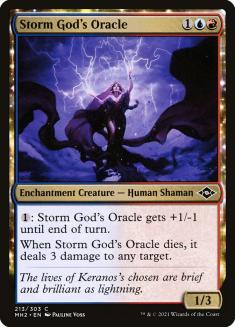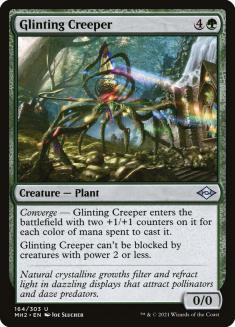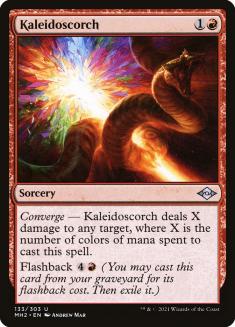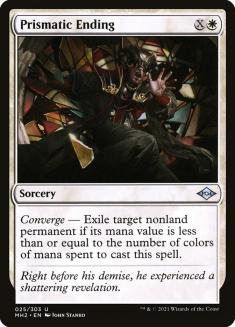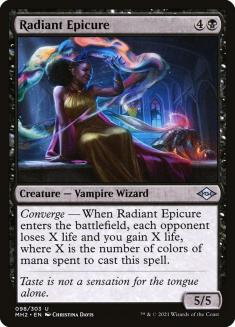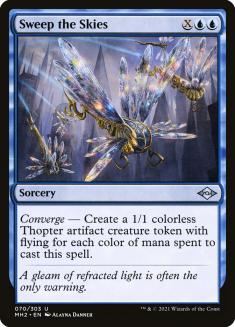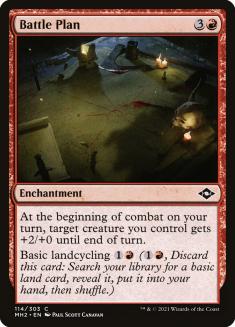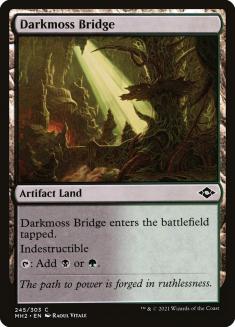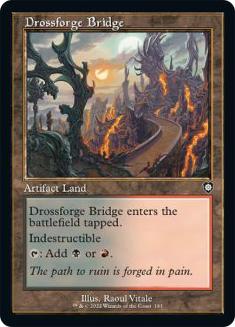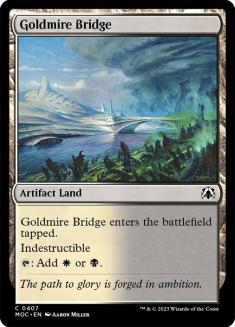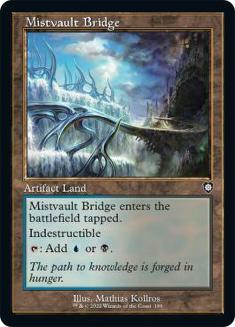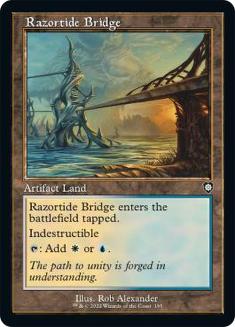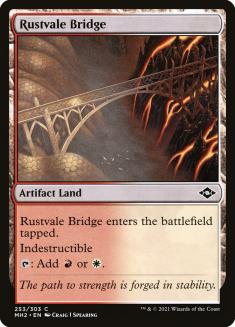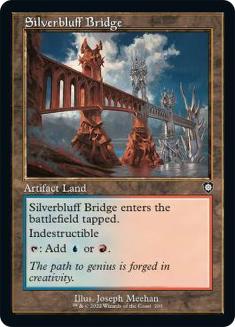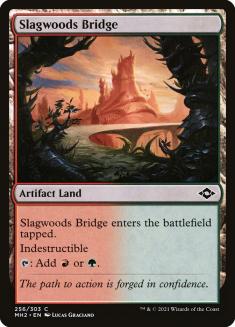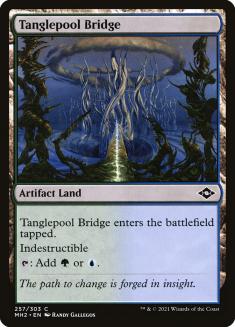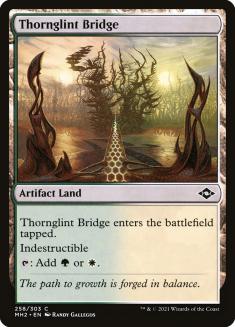While everyone was busy wringing their hands about whether or not Modern Horizons 2 would break several formats, I was patiently waiting to get my hands on three packs to draft. As a Limited grinder, the early days of a set are when you get the most of your “Harlem Globetrotters versus the Washington Generals“-level games and stack up packs on Magic Online (MTGO).
People are experimenting. Experiments go terribly wrong all the time. See: Democracy.
I dove in, ripped a couple of early trophies, and wanted to report back on the format before you’ve lost more tickets than GWAR during the pandemic. Each archetype below has your core or “glue” cards, the horses you want to bet on. What you won’t see listed are universally solid plays (Tragic Fall, for example) because my fingers and brain hurt, unless they’re specific to that deck. For example, every red deck should be playing Mine Collapse, but Izzet Delirium wants that Mountain in the graveyard badly, so it’s listed in “glue.”
Modern Horizons 2 is a garden. Let’s dig in.
Boros Modular
Style: Aggressive
Difficulty: Easy
Glue Cards:
Plan: Curve out with red and white artifact creatures, then birthday candle (blow out) your opponent in combat with a well-timed Blacksmith’s Skill, Caprichrome, or Unbounded Potential. You win every trade as long as you have a creature on the battlefield to dump counters on, making this a truly annoying matchup for any opponent lacking a solid removal package. While it’s not ideal to have one massive oaf, sometimes it can pull a Logan Paul and, much to my chagrin, go the distance.
Downside: With more quality artifacts running around the format than an episode of “Antiques Roadshow”, most drafters are comfortable maindecking at least one Shatter effect.
Traps: Don’t go too deep on affinity with this deck. Slag Strider and Sojourner’s Companion can pay off when your opponent is reluctant to trade, but too high of a curve plus Rustvale Bridge can take you out of your primary goal: getting after your opponents faster than this dog.
Selesnya Proliferate
Style: Midrange
Difficulty: Easy
Glue Cards:
Plan: Accrue value from +1/+1 counter synergies while simultaneously growing your army with proliferate triggers. Keep in mind that, like the Suez Canal, we’re going big, not going wide. You’ll find a number of ways to generate tokens here, but Anthem effects are highly specific: Squirrel Sovereign applies only to Squirrels, Sylvan Anthem only green creatures, Thraben Watcher only non-tokens. Even moderately thicc creatures are overperforming for me in this format, but it’s not hard to get them dumbthicc.
Downside: Stalling in the mid-game is a real problem if an opponent can answer either a payoff or enabler. Like most archetypes in Modern Horizons 2, this deck relies heavily on the synergy of its pieces and can be hard to get back on track when disrupted.
Traps: Enchantments. See: Enchantress’s Presence; Resurgent Belief; Sanctum Weaver; Sterling Grove; Sythis, Harvest’s Hand. You will see them. You will pass them. You will have no regrets.
Rakdos Madness
Style: Aggressive
Difficulty: Moderate
Glue Cards:
Plan: Snatch up all the proactive discard enablers you can find and pitch away, enabling lightning-quick starts while your opponents are still waiting for their artifact lands to untap. I say proactive because the value squeezed from your discards (Viashino Lashclaw giving haste, Rakdos Headliner not dying) plus cost reduction is a formula for winning. A Patchwork Gnome regeneration shield is only so exciting.
Downside: Honestly? You’re probably fighting with someone else to draft this deck right now, as it’s solid but cannot support two drafters well. Avoid getting out over your skis and save Terminal Agony and Bone Shards for bodies that will stabilize for your opponent.
Traps: This is the trending TikTok dance of decks: if your sequencing is off, everything falls apart. Sometimes, it’s like jazz: it’s about the mana you don’t spend.
Orzhov Reanimator
Style: Midrange
Difficulty: Easy
Glue Cards:
Plan: Bones are your money. Dump cool threats into your graveyard. Then bring ‘em back to the battlefield. No fewer than seven different options are playable.
Graceful Restoration, your Bill Engvall uncommon, even lets you bring back a couple of evoked Soul of Migrations. Suddenly, you’ve amassed a horde of birds that would make Moira Rose proud.
Downside: A plethora of graveyard hate exists, from the personal must-include Break Ties to Tormod’s Cryptkeeper at colorless, so you never truly feel safe. Outside of uncommons Glorious Enforcer and Archfiend of Sorrows, you don’t have myriad high-mana-value creatures to sneak out in your colors, either.
Traps: As tempting as they can be, off-color threats combined with a Vile Entomber or discard effect aren’t what I think this deck is trying to do. Even if it’s something as sweet as a Thrasta, Tempest’s Roar.
Azorious/X Affinity
Style: Aggro
Difficulty: Moderate
Glue Cards:
Plan: Use Bridges and early artifact mana to power out affinity spells for next to nothing, establishing an early battlefield presence that can be too much for your opponent to overcome. Alternately, reach a critical mass of artifacts with Etherium Spinner and send your Thopters and a Filigree Attendant to cause trouble in the skies like an unmasked person on a Delta flight. Be cognizant of splash opportunities off your artifact lands and Ornithopter of Paradise, especially in Pack 3.
Downside: Just like with Boros, no one is bringing a Back to Nature to an artifact fight, so prepare for the feelsbad of losing your Sojourner’s Companion on sight.
Traps: Consider the impact every cheap artifact you draft will have. In the perfect deck, Zuran Orb will feel like a Mox. Most times, it will feel like, well… a Zuran Orb.
Simic Tokens
Style: Midrange
Difficulty: Moderate
Glue Cards:
Plan: Generate myriad Clue, Food, and Treasure tokens. Then survive long enough to cash them in. Ideally, you’re going full Etsy and upcycling them with cards like Combine Chrysalis or Lonis, Cryptozoologist. Squirrels are your fallback subtheme, but ideally you’re generating card advantage through Clues and digging to larger threats.
Downside: Common payoffs aren’t great, so you need a Junk Winder to stick to feel like you’re truly doing it. This has felt like a deck I’m pivoting to when it’s wide open as opposed to where I want to be.
Traps: Fae Offering requires a lot of work before you feel like you’re getting ahead, so triple-check your creature-to-spell ratio before slapping the roof of this bad boy and telling everyone how many tokens it can hold.
Dimir Discard
Style: Control
Difficulty: Hard
Glue Cards:
Plan: Hope you wind up in another deck. If that doesn’t work, draft as much cycling as you can and combine this with a bevy of discard-related cards. Ostensibly, you’ll be so far ahead on resources your opponent tosses in the towel. I have not seen this in practice, however. Mystic Redaction can be a win condition when you’re all in on this strategy, as Dihada’s Ploy and cyclers can net you multiple triggers per turn without leaving you at a massive card disadvantage. Otherwise, a Feast of Sanity package can get there in a pinch.
Downside: Aggro decks eat you for breakfast as you get set up, yet you’re light on strong ways to stabilize. Sounds about as fun as a podcast about the vast world of cold soups.
Traps: Pushing too hard to hit your random delirium bonuses that pop up and discarding real cards is the antithesis of what this deck wants to do. Treat them like a new season of Rick and Morty: when it comes, it comes.
Gruul Storm
Style: Combo
Difficulty: Hard
Glue Cards:
Plan: Reduce the costs of your expensive spells, cast cheap ones, suspend the rest, and then go off in a beautiful explosion that nets you… a bunch of Squirrels? There are certainly better payoffs, but I’m not sure the cost is justified when you’re starting at five and working up from there. Ideally, you can ramp a little prior to your storm turn and have a battlefield that can take advantage of a couple of Spreading Insurrections.
Downside: Not drafting Aeve, Progenitor Ooze puts you fairly far behind. Not ideal, considering it’s available at rare.
Traps: Pick your poison between missing your payoffs, lack of depth when it comes to suspend, or low synergy between the cards available. It’s a real “Tadpoles! Tadpoles is a winner” of a scenario.
Golgari Sacrifice
Style: Midrange
Difficulty: Easy
Glue Cards:
Plan: See Simic, only this time with Squirrel tokens! Since going wide isn’t a high priority in this set, Golgari gives you plenty of options for how to squeeze value out of your Squirrel factories. Sacrifice them to kill threats, draw cards, and much, much more. I’ve had fun so far drafting this with Loathsome Curator as a solid top-end that removes something trivial that will stop it from menacing. At the end of the day, this is the Tesla of decks, driving itself without too many wild inflection points.
Downside: You’re fighting with a lot of other decks for black removal, so prioritize it highly and take out flyers judiciously.
Traps: Take Funnel-Web Recluse a little higher than you might think you should. Reach is critical to keeping you in games and generating a Clue will keep you in longer games.
Izzet Delirium
Style: Aggressive
Difficulty: Moderate
Glue Cards:
Plan: Establish an early battlefield with your delirium-embued beaters and fill up your graveyard as quickly as humanly possible to beef them up. Ideally, you can trade a Storm God’s Oracle early enough to give you a critical enchantment creature dead and gone. I haven’t had a chance to draft this yet, but there certainly looks to be a nasty tempo deck here when it all comes together.
Downside: Remember all that graveyard hate we talked about in the reanimator portion? Well, it’s particularly devastating here.
Traps: Avoid getting too cute at your top-end and focus more on ways to cycle and burn things.
Five-Color Converge
Style: Control
Difficulty: Hard
Glue Cards:
Plan: Be the only five-color converge deck at the table. Wheeling (or seeing a late) Glinting Creeper or Sweep the Skies is how you find yourself pivoting from an average deck. They also give you the battlefield stabilization you need after being set back by the Bridge after Bridge you need to cast them. Speaking of which, don’t panic if you fail to hit too many. Just like the converge cards, you’ll also find a cycle of basic landcyclers that can help you fix.
Downside: Linear strategies have paid off big time for me thus far. While you can play most any rare you draft, sometimes they’re only going to truly shine in the shell they’re designed for. A BTS member doing a solo song isn’t inherently bad; watching them together is what I stan.
Traps: Forgetting your fixing is your ultimate downfall. You should have no problem finding 23 cards, so make sure you can cast them.
Wedge/Shard Shenanigans
With that out of the way, I believe this is a three-color format for most drafters. With significant overlap between strategies and solid fixing, you should be able to pull this off more times than not.
Naya Counters: Do modular things and use proliferate/reinforce to quickly overwhelm opponents.
Jeskai Artifacts: A less aggressive Boros deck that can go almost pure artifacts with an affinity top-end.
Grixis Madness: What blue lacks in madness payoffs, it more than makes up for in value for your discards.
Esper Reanimator: Blue also brings some better discard payoffs to the table for early reanimation targets.
Sultai Sacrifice: The ultimate in midrange value, adding black to your Simic base lets you get more out of Treasures when you don’t need mana or Food when you don’t want life.
Jund Storm: Possibly the only way to save Storm is to leverage cheap madness spells to go off early.
Overall, I think the design team managed to nail a flexible but synergistic format, which is no easy task. All that, while not making it feel overly busted. I can’t wait to get back to drafting.

